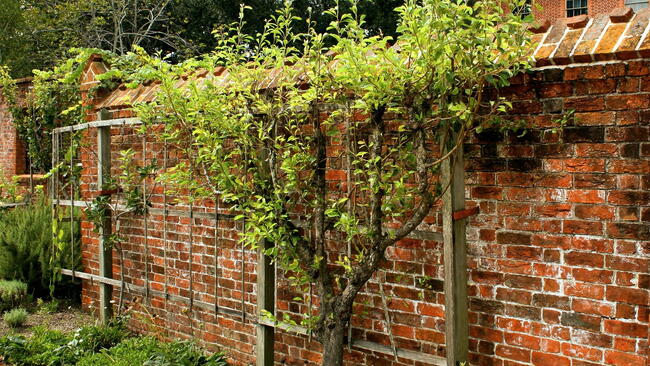The emerald ash borer has hit my area hard and all the ash trees close to our house have been affected. The trunk was too large for our chainsaw, and the 5 other trees, though smaller, were too close to the house for us to safely take down. Time to call in the experts! So, what is an arborist and what do they do that is so special and often very expensive?
One of our trees is a magnificently tall ash tree which in the space of 2 years went from appearing totally healthy to losing all its bark—a condition called blonding caused by woodpeckers hunting for the beetles’ larvae.
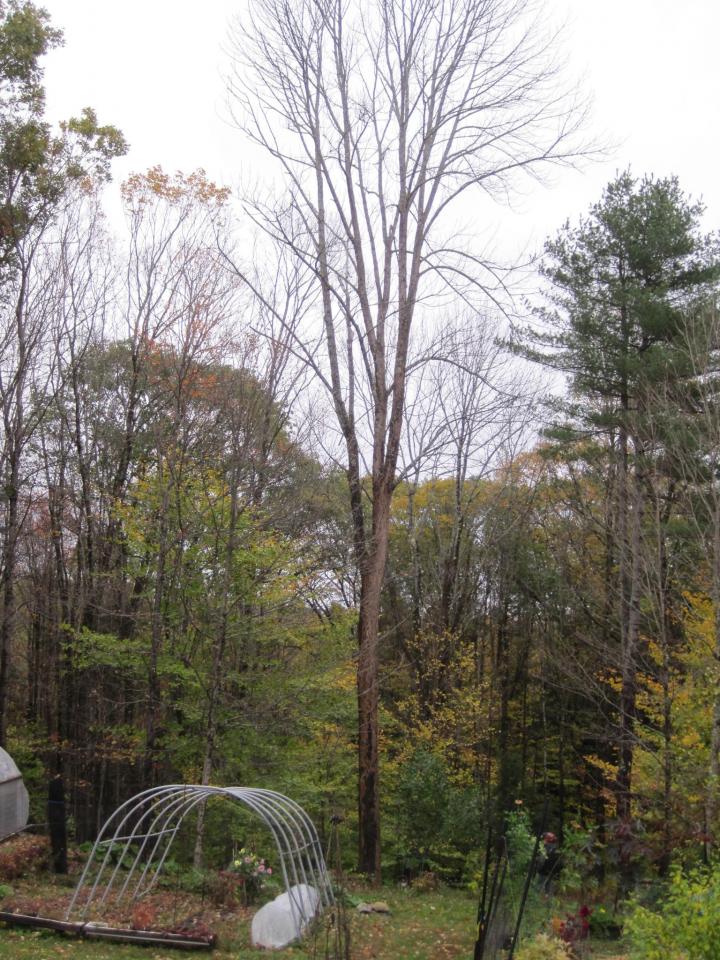
How do you choose someone to do this type of work? Clearly you want a qualified arborist, not just someone with a chainsaw looking to chop up tree branches make a few extra bucks. That’s not pruning. So what is an arborist and what do they do that is so special and often very expensive?
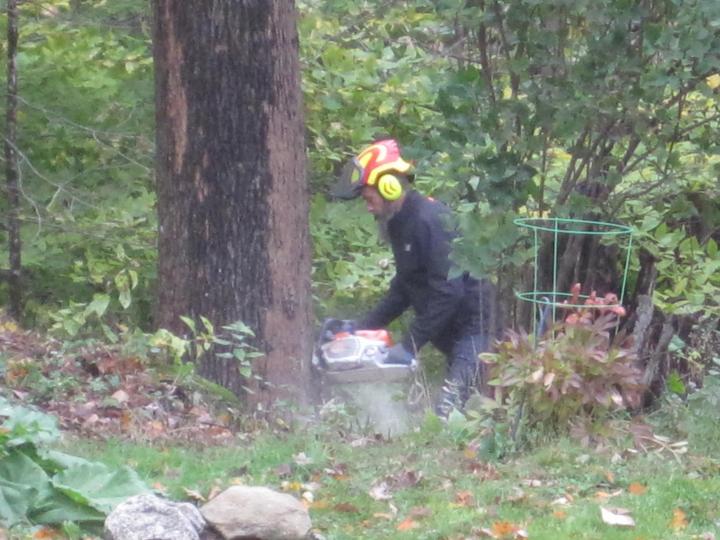
We needed a man with a bigger saw.
What is an Arborist?
An arborist is someone who takes care of trees. They understand tree diseases, insect control, proper pruning, fertilizing, and —not just removal. You don’t have to have a college degree to be an arborist but most have taken classes in forestry, arboriculture, horticulture or another related field. To become a certified arborist you need to pass an exam given by the International Society of Arboriculture (ISA). This certification needs to be renewed periodically and ongoing training is necessary to renew credentials and licenses. It is an indication that the arborist is a highly trained, knowledgeable professional. Some states have their own arborist associations as well.
Why Hire An Arborist?
We spend so much time and money taking care of our yard and garden, but assume trees will just take care of themselves. Trees need care, too. In fact, trees have a lot of value on a property. Proper tree care is an investment that can lead to substantial returns.
Don’t hire anyone with a saw. Most of those guides just cut limbs. An arborist will actually determine type of pruning to maintain or improve tree health while also creating a better tree structure to reduce
wind resistance and potential for storm damage. They’ll improve the shape of the tree. Can you or a guy with a saw do that? If so, be my guest.
Frankly, another reason for hiring a proper tree guy is safety. It is not safe to cut limbs above your head without proper protection and precautions. Arborists have the skills and equipment to safely and efficiently remove trees and limbs when necessary. In emergencies, the weight of storm-damaged trees is great and they can be very dangerous to you and often your property to remove or trim.
When you’re planting trees, it’s also useful to hire a landscaper with an arborist certification. Instead of just planting and packing trees onto a property, they’ll understand which trees to choose for the location and consider the right amount of growing space (which is almost always more than you realize). The wrong tree in the wrong location will just lead to poor growth and a loss of that investment.
Learn more about how to plant a tree.
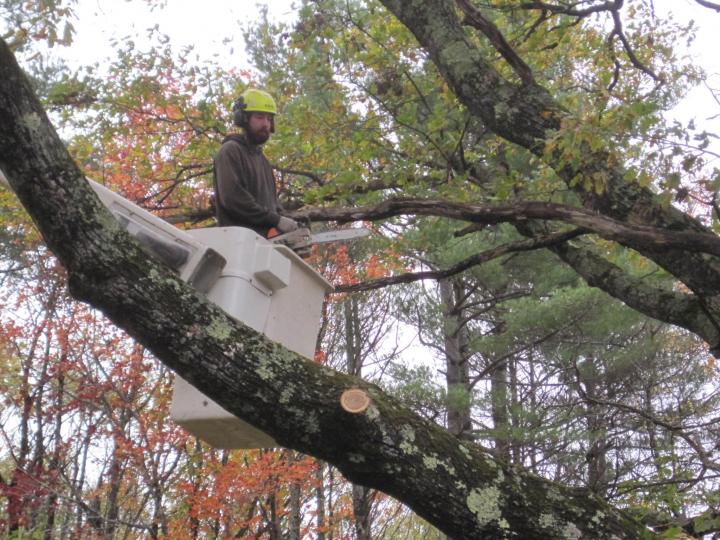
Since the bucket truck was there we had them trim out the dead limbs on the oak tree.
After knowledge and experience, the most important qualification for an arborist is insurance. You are liable if an uninsured worker is hurt on your property or damages a neighbor’s property. They should be able to show you proof of several types of insurance including liability for personal injury and property damage, and worker’s compensation. Just to be on the safe side, check with the insurance company to make sure the policies are still good.
Get references and recommendations from previous customers. Better Business Bureau and even Facebook, Yelp, and other online forums often have reviews (and horror stories) about businesses. Visit some of their past jobs to see work that was done. Unless there is imminent danger involved with your tree removal project, don’t be in a hurry to choose and don’t be pressured into signing a contract right now to get a discount. Never pay up front!
Where to Find a Certified Arborist
Go to the International Society of Arboriculture (ISA) website www.treesaregood.org to find a ISA Certified Arborist in your location.
If you see other memberships, it also shows expertise and professional commitment to stay on top of the latest information and skills. Examples are: National Arborist Association (NAA), American Society of Consulting Arborists (ASCA), and the local chapter of the International Society of Arboriculture (ISA).
What to Ask an Arborist
Get in writing what the job will entail.
- Are they climbing the tree to limb it or will they be using a lift or bucket truck?
- Are they chipping the brush?
- Who gets the wood?
- Will they be removing the stumps by grinding or digging?
- What about other cleanup needed?
- What safety equipment do you use? (A real arborist will be using proper gloves, safety goggles, hardhats, and much more.
- What access do you need? (Make sure you know if their equipment will be rolling over/destroying your lawn.)
Good arborists only perform accepted tree care practices. For instance, some practices are not recommended:
- Topping.
- Using climbing spurs on live trees.
- Removing excessive wood.
Arborists are defenders of trees. You can tell when the arborist cares about the tree first versus just getting the job done. For example, they usually won’t be too quick to want to just cut, cut, cut trees down. They may talk about whether the tree fits the climate. Or, they’ll insist that a tree needs proper space to grow well.
And again, make sure you cover these basics:
- ISA Certification
- Proof of insurance.
- References
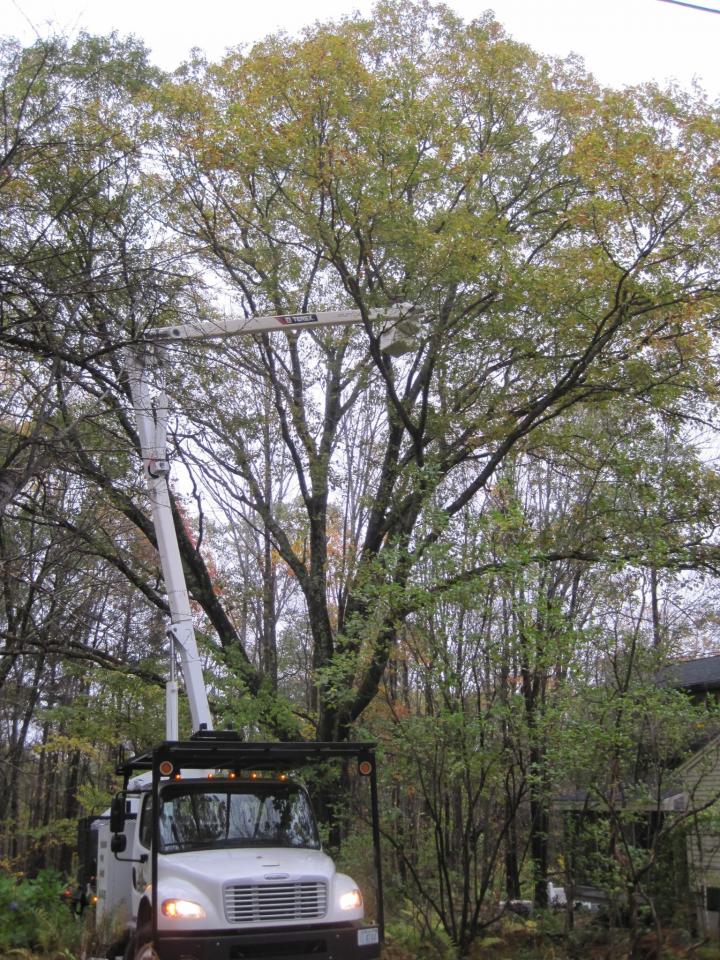
This oak is quite the stately tree but full of dead limbs that drop on us during every wind storm.
Costs of an Arborist
As far as cost goes, consider the risk involved in this job, insurance, training, equipment including bucket trucks, lifts, chippers, saws, and safety gear; it all adds up. The height of the tree and thickness of the trunk are also factors to be considered along with the proximity of powerlines and the cost of local permits that may be needed.
Get more than one written estimate and make sure that the price for all services are listed so there are no surprises later on. The lowest bidder is often not the most qualified person for the job. Also, never go for those door-to-door solicitations which usually start with the claim, “I know your neighbor.”
Once you have decided on the right person, get a written contract.
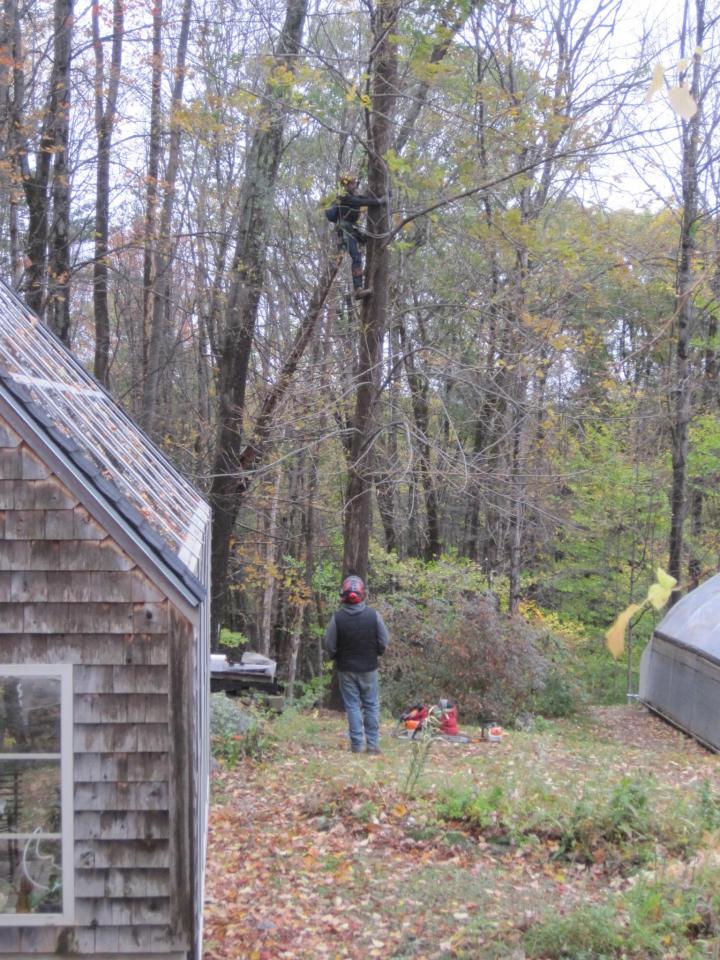
This was a tricky take down between two greenhouses. The bucket truck could not negotiate the hill so they had to climb up and limb the tree first.
I am very glad we made sure our arborist had insurance since our greenhouse got hit and damaged by one of the felled trees. Ouch!
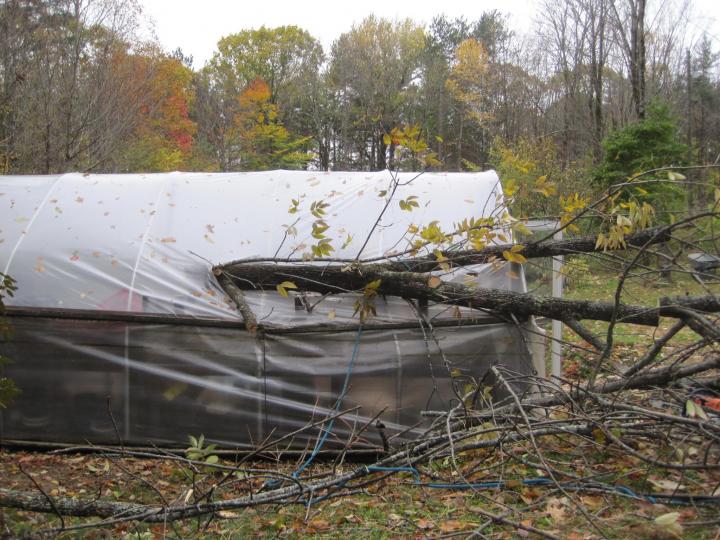
Even though this chunk of the top was roped off it managed to hit the hoophouse. Better than if it hit the glass greenhouse, but still not the outcome we had hoped for!
Learn more about when to prune trees and shrubs. And see our winter-pruning guide on HOW to prune trees and shrubs correctly.













